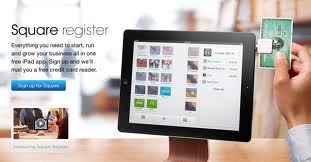Digital innovation is changing the way people may make and receive payments. In this article, Westminster Business School student Kristen McGinn discusses how Square has allowed innovation in businesses.
Square, Inc. is a mobile point of sale (POS) system, created in 2009, which takes down traditional barriers that new businesses would traditionally face when looking to incorporate credit and debit card transactions into their business.
Since then, the service has grown, creating more applications to expand its abilities, offering apps for customers and personal use, working in making transactions more personal. These applications help improving both sides of the transaction, business and customer. Once signing up for Square you receive a “dongle” that attaches to your mobile phone or iPad, turning it into a credit card reader. Square charges a flat rate for the service.
Square breaks down some of the traditional barriers that new companies would normally have to face, when entering into business. With these barriers out of the way new businesses save money and are able to accept most customers because they are not held back by payment restrictions. This increases business profits and customer base because no one is turned down. It also increases the likelihood that business will increase through word of mouth because of the ease of transaction.
Another benefit for the business is an app that tracks the time that your transactions take place. This way you can see when your busiest times of the day are, which can help you to improve your hours. Recently Square has announced the public availability of Square Stand in Best Buy and Apple retail locations, allowing customers to see what it is like before purchasing. This device turns your iPad into a full register that accepts cash and credit with a receipt printer and barcode scanner.
For personal use you can use Square Cash to send money to someone, as long as they have email. This particular app makes sending cash simple and quick. It is very compatible, unlike similar competitors, i.e. Venmo and Google Wallet, as you don’t have to be an account holder and you can have any email service. Another advantage is that the app is free, if you choose to download it.
Though you have to put a lot of trust into the company, it does have a strong track record in its merchant business, and the service alerts you if it appears that you sent money; giving you the chance to cancel a transaction that was a mistake or didn’t come from you. With the latest iPhone, Jack Dorsey, Square’s co-founder thinks that the new sensor will help the company because it adds a level of protection to your phone and now credit cards. This will help customers to feel more comfortable using Square. Since the app is available in both the Android and Apple markets, you are able to see other people’s ratings and comments on the app, if you personally don’t know anyone using it. This expands the number of peers you are able to gain insight from, adding to the level of comfort you have with the app.
The POS industry is evolving, so new entrants are taking on the market from different angles. This means new innovation, options for the customer to choose from, and more challenges for Square.
For instance, Loop looks to the customer side of the transaction, rather than changing the way the merchant works. Loop created a Magnetic Secure Transmission (MST) that works with your phone, the same way that a credit card would, when going to swipe it through the mag strip reader. Loop is an example of how new entrants are coming into the market from different angles.
A second example is GoPago, which does many of the same things that Square does, but it gives merchants an Android tablet and wireless data. It also gives customers the ability to place a takeout order in advance, allowing them to just go to the store and pick up the order. The differences between the two are minor, showing how tough the industry is and how crucial it is to be innovative in an industry that seems so basic. Substitutes also have a higher threat because of the different global market.
Though they are in Canada, where businesses using the Square process over $100M in credit card payments and where they have just made the system able to accept American Express cards. Square is also moving overseas to Japan. They are going there because of the number of small businesses and the difficulties they encounter when using credit cards. They know that this market will be difficult, but if they can break through, it will show just how strong Square is.
Square shows how the POS industry, one that looks to have basic needs, is evolving into a more diverse and complex industry. Improvements to technology bring the level of competition is growing and becoming more diverse. This technology is inspiring because you are able to see in almost real time the changes in the retail and POS industries. It shows you how important it is, as a store, to be changing almost as rapidly as the technology. It shows how important technology is becoming for both the customer and the store.
About the author
My name is Kristen McGinn. I am studying business management at Roger Williams University. At the moment, I am doing a semester abroad at the University of Westminster, in which I am a student in the course Business Innovation in Digital Economies.
- Team Atlas Makes It To The Semi-Finals Of The Universities Business Challenge – The World’s Leading Event For Employability And Enterprise Skills - December 18, 2015
- #LoveFestive Photo Competition – What Does Festive Mean To You? - December 1, 2015
- Business Economics Course Attends Institute Of Fiscal Studies Conference - November 30, 2015
